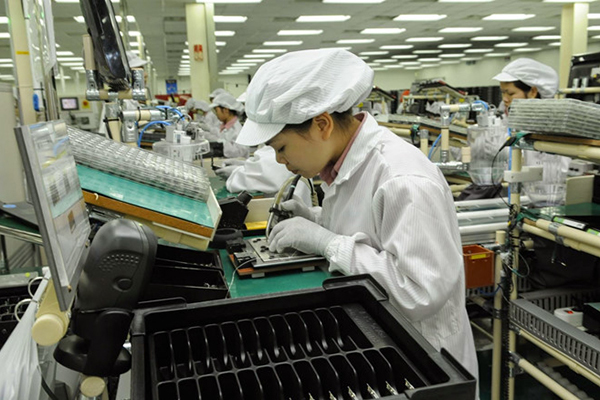 |
|
American investors have so far committed only some US$10 billion in Vietnam
|
Vietnam will have to do much with its supporting industries and workforce if it wants to lure better high-tech foreign investments, experts said.
According to Nguyen Duc Thanh, director of the Vietnam Institute for Economic and Policy Research, the best companies in the US, Europe and Japan are not picking Vietnam but instead have moved to other regional countries like Malaysia, Indonesia, and Thailand, where developed supporting industries and highly-qualified human resources are already in place.
Vietnam mainly receives capital from firms with medium technology and a simple workforce, Thanh said. In other words, investors still don’t bet Vietnam is a reliable destination for tech giants.
Nguyen Van Toan, vice chairman of the Vietnam Association of Foreign Invested Enterprises, said that the high quality investment inflow from the US and EU in Vietnam remained hardly noticeable compared to the country’s total FDI and the overseas investment capital of these investors in the world and ASEAN countries over the past years.
In fact, Vietnam in recent years has continuously seen a sharp increase in investments from Asian investors, but giants from the US and EU are still absent in Vietnam.
According to data from the General Statistics Office, American investors registered to invest just US$180 million in Vietnam in the first half of this year. So far, the world’s number-one economy has committed only some US$10 billion in Vietnam, compared to US$300 billion in committed FDI in Vietnam.
Investment by European countries to Vietnam has been almost imperceptible as well compared to their potential. They had invested only some US$24.67 billion in Vietnam by the end of last year.
These figures, when compared to Asian countries pouring capital into Vietnam such as the Republic of Korea with $59 billion, Japan with $49.8 billion, are very modest, Toan said, attributing the restriction to the country’s poor capacity to absorb the capital inflow due to the limited qualified labor force, underdeveloped supporting industries and infrastructure, and multiple barriers when it comes to the investment environment.
Toan questioned when the investors bring the capital and technology to Vietnam. But how Vietnam does to absorb that capital, what to do with human resources do to keep up with technology, and infrastructure development are the bigger concerns.
Tough work
With limited resources, this is now time for Vietnam to consider placing importance on high-quality capital in order to elevate its labor qualification, technology and protect the environment.
However, he said, under the country’s current legal system, FDI selection will certainly be a very tough job as it cannot be done with a subjective mind but must adhere to a system of legal documents with very specific criteria.
Currently, even some clear definitions, such as what high technology is, what source technology is, and how priorities should be given, are not yet available, Toan said, adding this has led to the fact that localities mainly approve projects by just ‘looking’ at the investors, not at their project quality.
As regards FDI attraction in the coming period, Toan suggested the criteria for foreign capital attraction should be established on the basis of science.
To do so, it is essential to build a qualified team who can define what high technology is, what source technology is, and formulate specific policies for each type of production and business.
He expected Vietnam’s strategy for FDI attraction in the new era, which is being drafted by the Ministry and Planning and Investment, will include more effective FDI selection policies to enable the country to acquire high technology, source technology and high-quality human resources. Hanoitimes
Linh Pham
 With limited resources, this is now time for Vietnam to consider placing importance on high-quality capital in order to elevate its labor qualification, technology and protect the environment.
With limited resources, this is now time for Vietnam to consider placing importance on high-quality capital in order to elevate its labor qualification, technology and protect the environment.